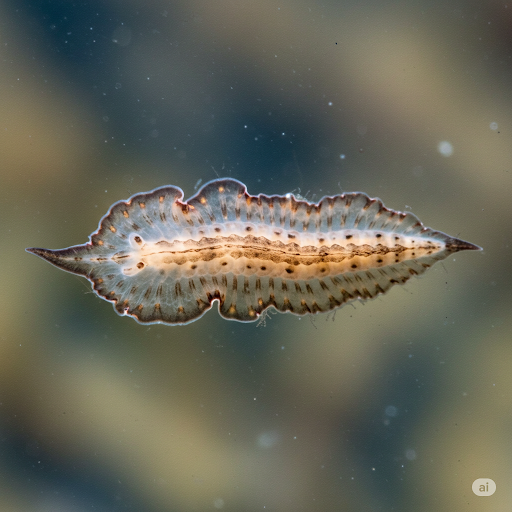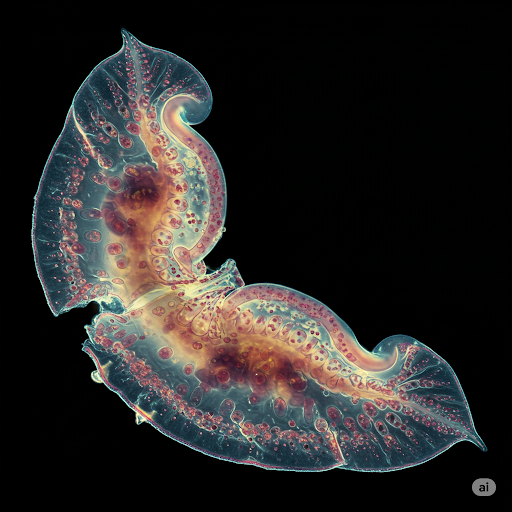Planarians are free-living flatworms belonging to the phylum Platyhelminthes. These organisms are particularly notable for their regenerative capabilities; they can reconstruct an entire organism from even a small fragment of their body. This remarkable trait has made planarians model organisms in various fields such as regenerative biology, stem cell research, and neuroscience. Additionally, their simple nervous systems and behavioral characteristics play a significant role in the study of nervous system evolution and learning mechanisms.
Morphology and Taxonomy
Planarians exhibit a dorsoventrally flattened body structure and bilateral symmetry. Their bodies are divided into three main regions: head, trunk, and tail. The head region typically bears two eye-like structures that are sensitive to light. The mouth is located on the ventral (underside) surface of the body and is used for feeding through a protrusible pharynx. Planarians belong to the order Tricladida, which includes species inhabiting freshwater, marine, and terrestrial environments. Molecular phylogenetic studies have provided crucial insights into the taxonomic classification of planarians and have contributed to the understanding of evolutionary relationships among species.

Planarian in Shallow Water (Generated by Artificial Intelligence)
Regenerative Capacity and Stem Cells
The most remarkable feature of planarians is their extraordinary regenerative abilities. They can regenerate an entire organism from even a small fragment of their body. In this process, pluripotent stem cells known as neoblasts play a crucial role. Neoblasts are distributed throughout the body and, in response to injury, divide to reconstruct missing tissues. At the molecular level, various signaling mechanisms, such as the Wnt signaling pathways, are instrumental in directing the regeneration process. These characteristics make planarians an ideal model organism for regenerative medicine and stem cell research.

Planarian During Regeneration (Generated by Artificial Intelligence)
Nervous System and Behavioral Characteristics
Despite its simplicity, the nervous system of planarians is highly functional. Two cerebral ganglia located in the head region are connected to ventral nerve cords that extend throughout the body. This structure enables planarians to respond to environmental stimuli and exhibit various behaviors. Studies have shown that planarians possess cognitive abilities such as learning and memory. For instance, planarians that have learned a specific task have been observed to retain this memory even after regenerating their brains following decapitation. This phenomenon suggests that memory may be stored outside the central nervous system as well.

Neural Connections (Generated by Artificial Intelligence)
Ecological Role and Evolutionary Significance
Planarians play a crucial role in ecosystems. Through their carnivorous feeding habits, they help regulate populations of small invertebrates and contribute to the cycling of organic matter. Furthermore, their presence across diverse habitats and the development of various adaptations provide important insights for evolutionary biology. Differences observed in the regenerative abilities of certain species help researchers understand the influence of evolutionary processes on this capacity. Therefore, planarians are valuable model organisms for both ecological and evolutionary studies.


